-
 Bitcoin
Bitcoin $107,535.3915
-1.00% -
 Ethereum
Ethereum $2,513.2907
-1.34% -
 Tether USDt
Tether USDt $1.0002
-0.01% -
 XRP
XRP $2.3040
-1.92% -
 BNB
BNB $667.0450
-0.74% -
 Solana
Solana $172.1304
-1.92% -
 USDC
USDC $0.9999
0.01% -
 Dogecoin
Dogecoin $0.2202
-3.11% -
 Cardano
Cardano $0.7508
-0.78% -
 TRON
TRON $0.2729
0.45% -
 Hyperliquid
Hyperliquid $37.9716
11.25% -
 Sui
Sui $3.5160
-3.42% -
 Chainlink
Chainlink $15.2541
-2.43% -
 Avalanche
Avalanche $22.4608
-2.48% -
 Stellar
Stellar $0.2829
-1.81% -
 Shiba Inu
Shiba Inu $0.0...01431
-0.39% -
 Bitcoin Cash
Bitcoin Cash $414.6973
-2.97% -
 UNUS SED LEO
UNUS SED LEO $8.9026
1.06% -
 Hedera
Hedera $0.1844
-2.82% -
 Monero
Monero $407.2378
2.73% -
 Toncoin
Toncoin $2.9828
-0.49% -
 Litecoin
Litecoin $94.8931
-1.74% -
 Polkadot
Polkadot $4.4718
-2.07% -
 Bitget Token
Bitget Token $5.3951
-3.60% -
 Pi
Pi $0.7731
1.27% -
 Pepe
Pepe $0.0...01311
-4.99% -
 Dai
Dai $0.9999
-0.01% -
 Ethena USDe
Ethena USDe $1.0004
-0.02% -
 Aave
Aave $264.5219
-0.15% -
 Uniswap
Uniswap $6.0680
-1.63%
How to use CCI in combination with Bollinger Bands? Can it filter out false signals?
CCI and Bollinger Bands enhance crypto trading by filtering false signals; use them together for stronger buy/sell signals based on overbought/oversold conditions.
May 25, 2025 at 10:42 am
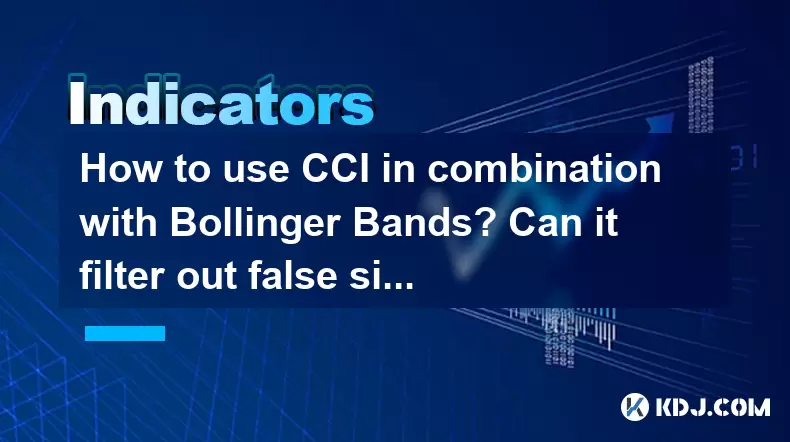
The Commodity Channel Index (CCI) and Bollinger Bands are two popular technical indicators used by traders in the cryptocurrency market to make informed trading decisions. When used in combination, these tools can enhance the accuracy of trade signals and potentially filter out false signals. This article will explore how to use CCI in combination with Bollinger Bands, detailing the steps to set up and interpret these indicators, and discussing their effectiveness in filtering out false signals.
Understanding CCI and Bollinger Bands
The Commodity Channel Index (CCI) is a versatile indicator that can be used to identify cyclical trends in the price of a cryptocurrency. It measures the difference between the current price and the historical average price, helping traders identify overbought and oversold conditions. The CCI typically oscillates above and below a zero line, with values above +100 indicating overbought conditions and values below -100 indicating oversold conditions.
Bollinger Bands, on the other hand, are a volatility indicator that consists of a middle band being a simple moving average (SMA) and two outer bands that are standard deviations away from the SMA. The standard setting for Bollinger Bands is a 20-period SMA with the outer bands set at two standard deviations. The bands expand and contract based on the volatility of the price, providing insights into potential price breakouts and reversals.
Setting Up CCI and Bollinger Bands on Your Trading Platform
To effectively use CCI in combination with Bollinger Bands, you need to set them up correctly on your trading platform. Here are the steps to do so:
- Open your trading platform and navigate to the chart of the cryptocurrency you are interested in trading.
- Add the CCI indicator to the chart. You can usually find this in the indicator menu under 'Oscillators' or 'Momentum'. Set the period to the default of 20, which is commonly used by traders.
- Add the Bollinger Bands indicator to the chart. This can typically be found under 'Volatility' or 'Trend' indicators. Set the parameters to a 20-period SMA with the outer bands at two standard deviations.
- Adjust the chart layout so that both indicators are visible and easy to read. You might want to place the CCI in a separate pane below the price chart and the Bollinger Bands directly on the price chart.
Interpreting Signals from CCI and Bollinger Bands
Once you have both indicators set up, you can start interpreting the signals they generate. Here's how to do it:
- Look for CCI crossing above +100: This indicates that the cryptocurrency might be overbought, suggesting a potential sell signal.
- Look for CCI crossing below -100: This indicates that the cryptocurrency might be oversold, suggesting a potential buy signal.
- Observe the price in relation to the Bollinger Bands: If the price touches or crosses the upper Bollinger Band, it could be a sign of overbought conditions. Conversely, if the price touches or crosses the lower Bollinger Band, it could indicate oversold conditions.
- Combine the signals: A strong buy signal is generated when the CCI crosses below -100 and the price touches or crosses the lower Bollinger Band. A strong sell signal is generated when the CCI crosses above +100 and the price touches or crosses the upper Bollinger Band.
Filtering Out False Signals
One of the primary benefits of using CCI in combination with Bollinger Bands is the potential to filter out false signals. Here’s how this combination can help:
- Confirmation of signals: By requiring both indicators to confirm a signal, you reduce the likelihood of acting on a false signal. For example, if the CCI indicates an oversold condition but the price is not near the lower Bollinger Band, it might be a false signal.
- Avoiding whipsaws: Whipsaws occur when the price moves back and forth rapidly, generating false signals. The combination of CCI and Bollinger Bands can help you avoid these by requiring a more robust confirmation of a trend.
- Identifying strong trends: When both indicators align, it suggests a stronger trend, increasing the confidence in the signal. This can help filter out weaker, potentially false signals.
Practical Example of Using CCI and Bollinger Bands
Let's walk through a practical example to illustrate how to use these indicators in a real trading scenario.
- Scenario: You are analyzing the price chart of Bitcoin (BTC) on a 1-hour timeframe.
- Step 1: You notice that the CCI has crossed below -100, indicating an oversold condition.
- Step 2: At the same time, the price of BTC has touched the lower Bollinger Band.
- Step 3: This combination of signals suggests a strong buy opportunity. You decide to enter a long position on BTC.
- Step 4: You set a stop-loss just below the recent low to manage risk and a take-profit level based on your analysis of potential resistance levels.
- Step 5: You monitor the trade, watching for any changes in the CCI and Bollinger Bands that might indicate a need to exit the trade.
Adjusting Parameters for Different Timeframes
The effectiveness of CCI and Bollinger Bands can vary depending on the timeframe you are trading. Here's how you can adjust the parameters for different timeframes:
- Short-term trading (e.g., 15-minute or 1-hour charts): Use a shorter period for both indicators, such as a 10-period CCI and a 10-period SMA for Bollinger Bands. This can help you capture quick price movements and generate more frequent signals.
- Medium-term trading (e.g., 4-hour or daily charts): Stick to the standard settings of a 20-period CCI and a 20-period SMA for Bollinger Bands. These settings are well-suited for capturing medium-term trends.
- Long-term trading (e.g., weekly or monthly charts): Use a longer period for both indicators, such as a 50-period CCI and a 50-period SMA for Bollinger Bands. This can help you identify longer-term trends and reduce the noise from short-term price fluctuations.
Frequently Asked Questions
Q: Can CCI and Bollinger Bands be used for all types of cryptocurrencies?
A: Yes, CCI and Bollinger Bands can be applied to any cryptocurrency, as they are based on price and volatility, which are universal characteristics of all tradable assets. However, the effectiveness of these indicators may vary depending on the liquidity and volatility of the specific cryptocurrency.
Q: How often should I adjust the parameters of CCI and Bollinger Bands?
A: The parameters of CCI and Bollinger Bands should be adjusted based on the timeframe you are trading and the specific market conditions. It's a good practice to periodically review and adjust the settings to ensure they remain effective for your trading strategy.
Q: Are there any other indicators that can be used in combination with CCI and Bollinger Bands?
A: Yes, other indicators like the Relative Strength Index (RSI), Moving Average Convergence Divergence (MACD), and volume indicators can be used in conjunction with CCI and Bollinger Bands to further enhance the accuracy of your trading signals.
Q: Can CCI and Bollinger Bands be used for both trend-following and mean-reversion strategies?
A: Yes, these indicators can be used for both types of strategies. For trend-following, look for sustained moves above or below the Bollinger Bands accompanied by corresponding CCI readings. For mean-reversion, focus on instances where the price touches the outer bands and the CCI indicates overbought or oversold conditions, suggesting a potential reversal.
Disclaimer:info@kdj.com
The information provided is not trading advice. kdj.com does not assume any responsibility for any investments made based on the information provided in this article. Cryptocurrencies are highly volatile and it is highly recommended that you invest with caution after thorough research!
If you believe that the content used on this website infringes your copyright, please contact us immediately (info@kdj.com) and we will delete it promptly.
- Dogecoin (DOGE) is heating up again. Right now, it's pushing to break past the $0.22 safe zone and make a run at the $0.30 resistance level.
- 2025-05-25 22:05:13
- Bitcoin [BTC] Is Still Flexing Serious Muscle Despite All the Volatility. By: Smith. Updated: May 27, 2021.
- 2025-05-25 22:05:13
- Coinbase-backed Base, an Ethereum Layer 2 network, is set to undergo significant upgrades to make it faster, cheaper, and more decentralized.
- 2025-05-25 22:00:26
- Layer 2 Network Base Prepares for Overhaul That Could Challenge Solana and Sui
- 2025-05-25 22:00:26
- 3 Altcoins Poised to Explode in the Next Bull Run: Qubetics (TICS), Hedera (HBAR), Cardano (ADA)
- 2025-05-25 21:55:15
- Ripple CEO Brad Garlinghouse Is Rallying Institutional Crypto Adoption as XRP and RLUSD Gain Traction
- 2025-05-25 21:55:15
Related knowledge
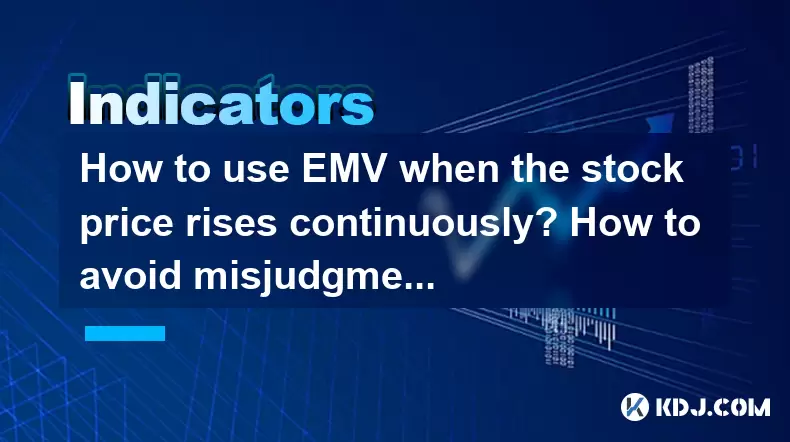
How to use EMV when the stock price rises continuously? How to avoid misjudgment in extreme market conditions?
May 23,2025 at 07:29pm
In the dynamic world of cryptocurrency trading, the Exponential Moving Average (EMA) is a powerful tool that traders use to make informed decisions, especially during periods of continuous stock price rises. Understanding how to effectively use EMAs and avoiding misjudgment in extreme market conditions are crucial skills for any crypto trader. This arti...
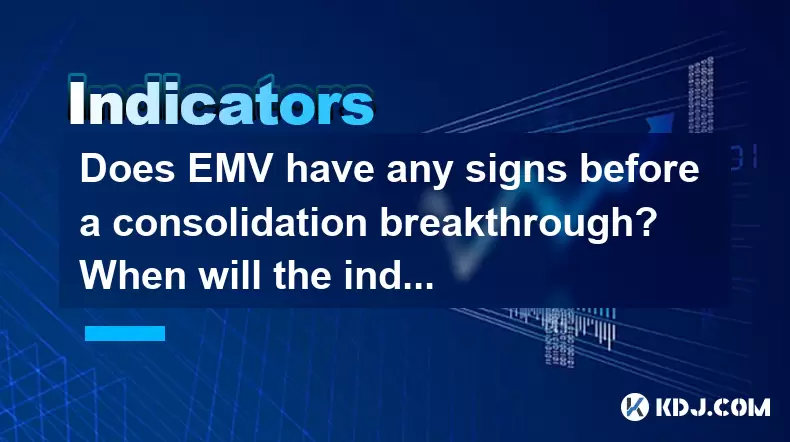
Does EMV have any signs before a consolidation breakthrough? When will the indicator give an early warning?
May 23,2025 at 06:42pm
Does EMV have any signs before a consolidation breakthrough? When will the indicator give an early warning? The Ease of Movement Value (EMV) is a technical indicator that helps traders understand the relationship between price and volume in the cryptocurrency market. It is particularly useful for identifying potential breakouts from consolidation period...
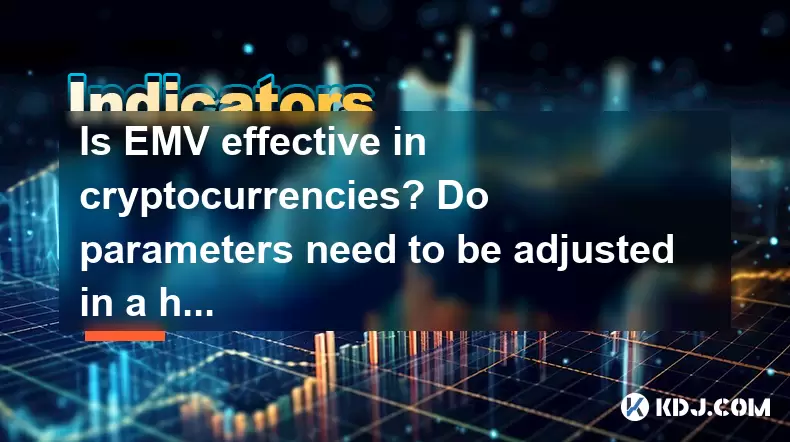
Is EMV effective in cryptocurrencies? Do parameters need to be adjusted in a high volatility environment?
May 24,2025 at 01:49am
Is EMV effective in cryptocurrencies? Do parameters need to be adjusted in a high volatility environment? EMV, or Ease of Movement Value, is a technical indicator that measures the relationship between price changes and volume. Originally developed for traditional financial markets, its application in the cryptocurrency space raises several questions ab...
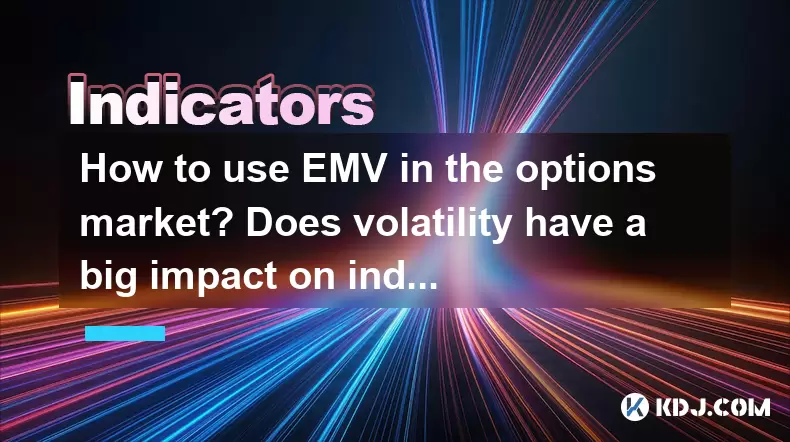
How to use EMV in the options market? Does volatility have a big impact on indicators?
May 24,2025 at 07:28am
How to Use EMV in the Options Market? Does Volatility Have a Big Impact on Indicators? The Ease of Movement Value (EMV) is a technical indicator that helps traders understand the relationship between price and volume, and it can be particularly useful in the options market. In this article, we will explore how to use EMV in the options market and examin...
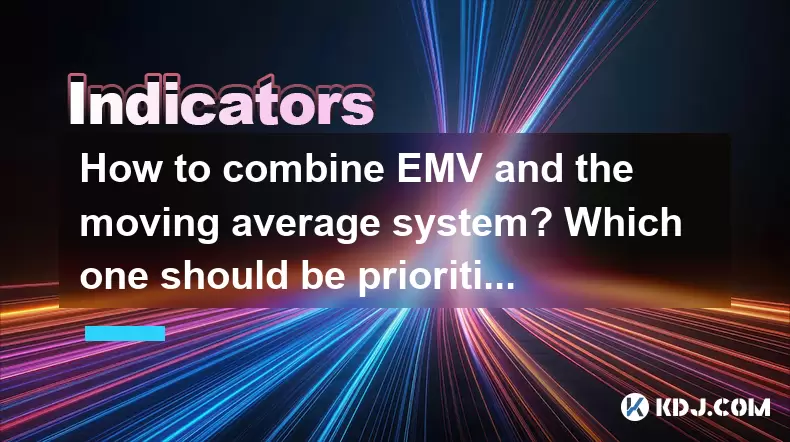
How to combine EMV and the moving average system? Which one should be prioritized when the golden cross and the dead cross appear at the same time?
May 24,2025 at 07:21pm
The combination of the Exponential Moving Average (EMA) and the moving average system is a popular strategy among cryptocurrency traders to identify potential trends and make informed trading decisions. This article will delve into how to effectively combine these tools, and what to do when the golden cross and the dead cross appear simultaneously. Unde...
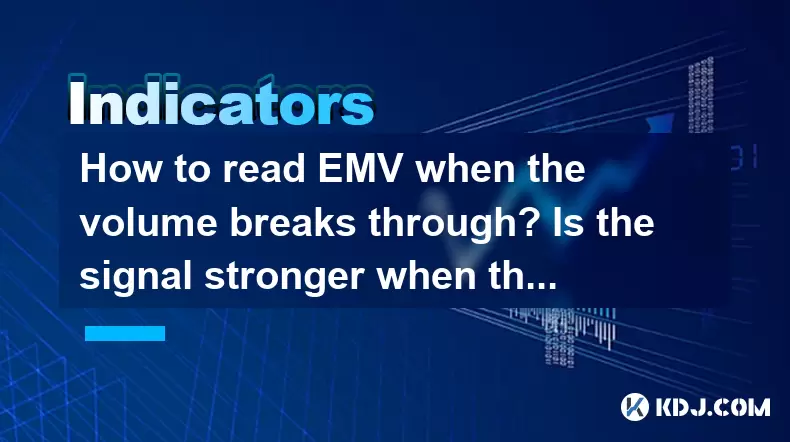
How to read EMV when the volume breaks through? Is the signal stronger when the volume and price cooperate?
May 24,2025 at 02:14pm
Understanding how to read EMV (Ease of Movement) when volume breaks through and assessing the strength of signals when volume and price cooperate are crucial skills for cryptocurrency traders. This article will delve into these topics, providing detailed insights and practical guidance. What is EMV and Its Importance in Cryptocurrency Trading?EMV, or Ea...

How to use EMV when the stock price rises continuously? How to avoid misjudgment in extreme market conditions?
May 23,2025 at 07:29pm
In the dynamic world of cryptocurrency trading, the Exponential Moving Average (EMA) is a powerful tool that traders use to make informed decisions, especially during periods of continuous stock price rises. Understanding how to effectively use EMAs and avoiding misjudgment in extreme market conditions are crucial skills for any crypto trader. This arti...

Does EMV have any signs before a consolidation breakthrough? When will the indicator give an early warning?
May 23,2025 at 06:42pm
Does EMV have any signs before a consolidation breakthrough? When will the indicator give an early warning? The Ease of Movement Value (EMV) is a technical indicator that helps traders understand the relationship between price and volume in the cryptocurrency market. It is particularly useful for identifying potential breakouts from consolidation period...

Is EMV effective in cryptocurrencies? Do parameters need to be adjusted in a high volatility environment?
May 24,2025 at 01:49am
Is EMV effective in cryptocurrencies? Do parameters need to be adjusted in a high volatility environment? EMV, or Ease of Movement Value, is a technical indicator that measures the relationship between price changes and volume. Originally developed for traditional financial markets, its application in the cryptocurrency space raises several questions ab...

How to use EMV in the options market? Does volatility have a big impact on indicators?
May 24,2025 at 07:28am
How to Use EMV in the Options Market? Does Volatility Have a Big Impact on Indicators? The Ease of Movement Value (EMV) is a technical indicator that helps traders understand the relationship between price and volume, and it can be particularly useful in the options market. In this article, we will explore how to use EMV in the options market and examin...

How to combine EMV and the moving average system? Which one should be prioritized when the golden cross and the dead cross appear at the same time?
May 24,2025 at 07:21pm
The combination of the Exponential Moving Average (EMA) and the moving average system is a popular strategy among cryptocurrency traders to identify potential trends and make informed trading decisions. This article will delve into how to effectively combine these tools, and what to do when the golden cross and the dead cross appear simultaneously. Unde...

How to read EMV when the volume breaks through? Is the signal stronger when the volume and price cooperate?
May 24,2025 at 02:14pm
Understanding how to read EMV (Ease of Movement) when volume breaks through and assessing the strength of signals when volume and price cooperate are crucial skills for cryptocurrency traders. This article will delve into these topics, providing detailed insights and practical guidance. What is EMV and Its Importance in Cryptocurrency Trading?EMV, or Ea...
See all articles
























































































